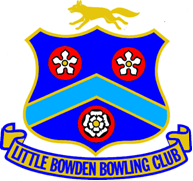Marking
DUTIES OF A MARKER – LAW 55.
The full duties of a marker are detailed in Law 55. Some excerpts and amplification are included here to guide all Club members asked to mark for singles matches.
In the absence of the Umpire the marker shall make sure that all aspects of play are carried out in line with the Laws of the Sport of Bowls.
We don’t really expect markers in club competitions to carry out a detailed examination of the bowls for correct stamps, etc, but it is useful to note the emblems in the inner circles and the colour on the card for reference. Remember that the marker does not assume the duties of an Umpire.
The marker should:
- Centre the jack;
- Check that the jack is at least 23 metres from the mat line after it has been centred, if necessary using the long tape measure;
- Place a jack that comes to rest less than 2m from the ditch in compliance with law 22.2. (If in doubt use the 2 metre measuring stick. Remember to place the jack beside the end of the stick and not at the front of the end);
- Stand to one side of the rink, behind the jack and away from the head, taking care not to obscure the rink markers;
- Remain still while play is in progress;
- Answer any specific question about the state of the head that is asked by the player in possession of the rink; The marker can now respond to the question and add any further information that may be beneficial to the player ie in respect of the question you highlighted he can identify number shots held and position of opponents woods (do not volunteer any additional information. E.g. If asked “am I holding shot?” Answer yes or no. Do not add a rider such as “yes, one and a measure”. ( advice must be relevant to the head of bowls,, under no circumstance should a marker give any indication to a bowler of what type of shot would be advantageous as this would be considered as coaching and not impartial);
- When asked, tell or show the player in possession of the rink the position of the jack;
- When asked, tell or show the player in possession of the rink which bowl or bowls the marker considers to hold the shot;
- Mark all touchers, with chalk, preferably use spray chalk so that you do not touch the bowls. Never touch a live wood in the head or remove chalk from non-touchers. The marker should mark the touching bowl as soon as possible after the following player has cast their bowl and before the cast wood has come to a stop, this ensures play is played at the pace of the competing players.
- The marker should remove all dead bowls from the rink; Dead bowls are bowls in the ditch which have not touched the jack, or have travelled sideways beyond the marker lines of the rink.
- Mark the position of the jack and any touchers when in the ditch;
- Do not move the jack or any bowls until the players have agreed the number of shots scored;
- Measure any disputed shots when asked to do so by either player (but remember you are measuring for the players and should only do so at their request. You do not make a decision, only express an opinion. It is for the players to decide, not the marker! If the players are not satisfied with the marker’s opinion, the marker should ask the umpire to do the measuring. If no umpire has been appointed, the marker should choose a competent neutral person to act as umpire. The players and the marker should vacate the rink while the umpire carries out the measurement. If no such person is available, the marker should appoint himself umpire and repeat the measurement. In all cases, the umpire’s decision is final;
- Prior to the commencement of every end ensure that the delivery mat is centred.
When an end is completed, the marker should:
- Record the score on the score card (only after both players have had the opportunity to study the head).
- Enter the score on the board at the conclusion of each end, not simply when you are at the same end as the board.
- If necessary, remove from the rink the mat used during the previous end. (Sounds simple, but always check that the mat, if already removed, has been placed safely on the bank and that it is not overlapping into the ditch.
When the game is finished, the marker should:
- See that the scorecard, containing the names of the players, is signed by the players, and is disposed of according to the rules of the competition.
